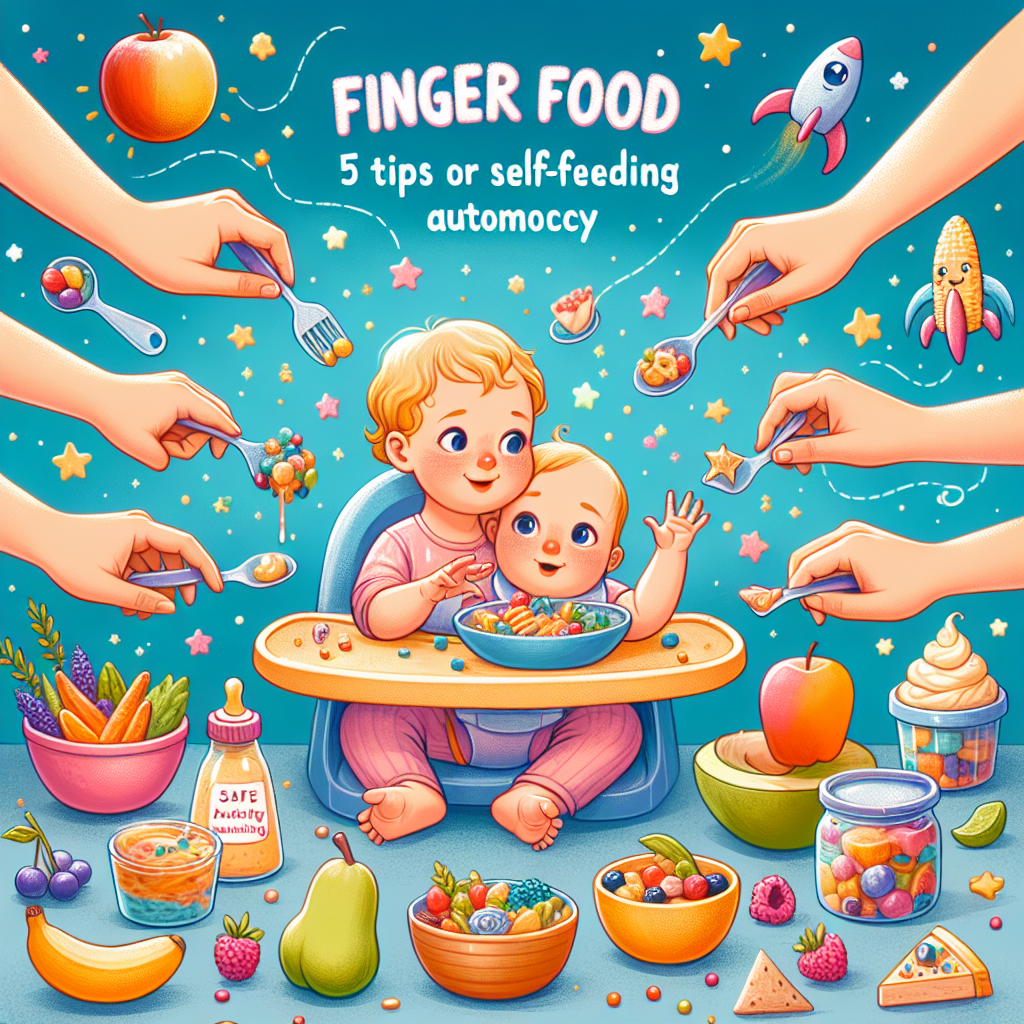Finger Food for Babies: 5 Tips for Autonomy in Food
The introduction of solid food into the baby's diet is a significant step in its development. By introducing the concept of "finger food", we encourage not only autonomy in eating, but also the improvement of hand-eye coordination and the development of fine motor skills. In this article, you'll discover five essential tricks to help make the transition to finger foods a positive and safe experience for your little one.
Safety First
The first and foremost consideration when it comes to finger foods is safety. Make sure the foods offered are easy for babies to eat and do not pose a choking hazard. Before introducing any new food, consult your pediatrician and check if your baby is ready for this stage.
1. Choosing the Right Foods
Choosing the right foods is crucial to the success of introducing finger foods. Start with small pieces of soft fruits and vegetables, such as bananas, avocados, sweet potatoes or squash. Make sure the food is neither too hard nor too slippery to minimize the risk of choking.
2. Encouraging Exploration
It is important to encourage babies to explore food with their hands and mouth. Don't worry about clutter; it is part of the learning process. Give them time and space to interact with the food at their own pace.
3. Pacing the Introduction of Food
Introduce finger foods gradually, starting with small amounts and increasing as baby develops independent eating skills. Observe carefully to identify favorite foods and those that may cause allergies or other adverse reactions.
4. Creating a Positive Environment
The atmosphere during meals should be calm and positive. Try to maintain a consistent mealtime schedule and sit down at the table with your baby so you can supervise them and move toward healthy eating habits.
5. Use of Appropriate Tools
By arming yourself with an easy-to-clean quarter and using bibs and other baby eating tools, you'll make the finger foods experience much less stressful for the whole family. Safe high chairs and the right accessories will make the process more pleasant and easier for the little one.
Motor Development through Finger Food
This is an essential aspect of child development. By using their fingers to eat, children improve hand-eye coordination and develop fine motor skills. Encouraging finger eating by offering a variety of finger foods will increase their confidence and independence.
Language and Social Development
With the introduction of finger foods, babies will also develop their language, having the opportunity to name foods and communicate preferences and needs. Also, shared meals, where the child can observe and imitate the body and verbal language of the parents, encourage social development.
Conclusion
The introduction of finger foods into the baby's diet is an essential step in its development. Safety, choosing the right foods, encouraging exploration, pacing the introduction of new foods, creating a positive eating environment and using the right tools are all key elements in this process. By following these tricks, parents can ensure a smooth transition to self-feeding and lay the foundation for healthy eating habits for babies. Remember to consult your pediatrician for personalized guidelines and enjoy this new chapter of your child's growth.
Call to Action
If you are interested in learning more about your child's nutrition and the best ways to encourage him to become an independent little foodie, we invite you to visit our dedicated section on the website and subscribe to our newsletter for more practical and informative tips.














































































































































